- Solar advice hub
- Installation
- The best angle and direction for solar panels in the UK
The best angle and direction for solar panels in the UK
Learn about the optimum set up for rooftop solar panels in the UK to ensure the highest output.


Why you can trust our content
We know that the solar industry is full of misinformation, but we only use reliable sources, including:
- Our experienced solar experts, installers and system designers
- Our own database of solar & battery system designs
- Authoritative bodies like MCS and the UK government



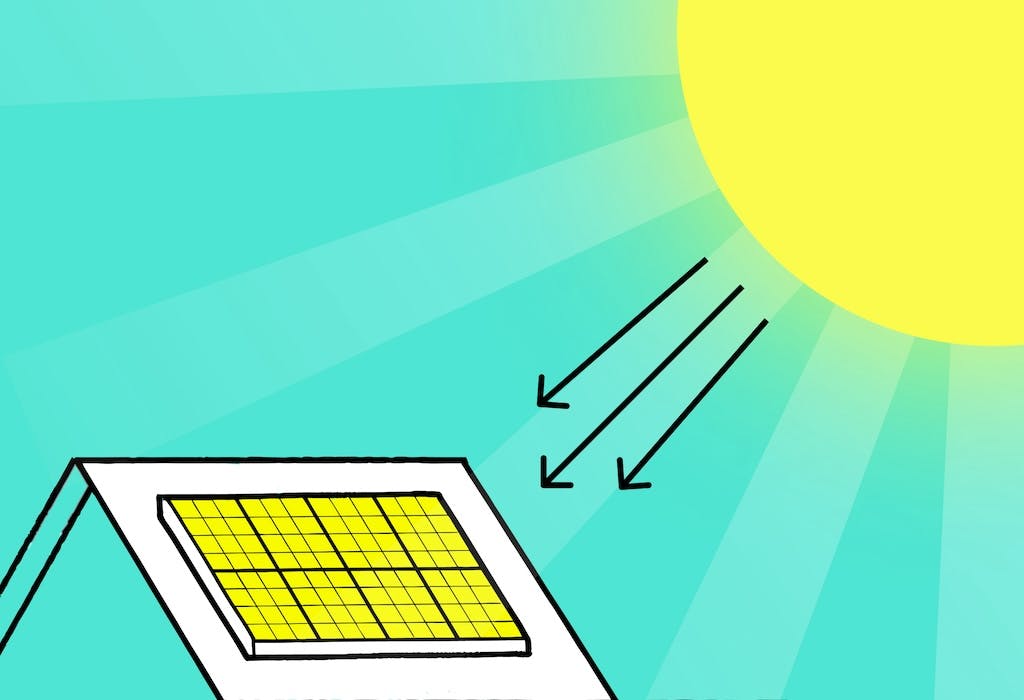
Calculate savings
What kind of home do you live in?
Calculate savings
What kind of home do you live in?
At a glance
Your solar panel system's position can have a huge impact on its output, so it's crucial to get it right.
Fortunately, it's easier than ever to install a productive system. A common view in the UK is that it's only worth going solar if you have a south-facing roof – but solar technology has progressed far beyond that point.
In this guide, we'll explain the range of angles and directions that are generally best for UK households, and what you can do if your home doesn't fit these requirements.
If you’d like to find out how much a solar & battery system could save you, fill out a few quick questions below and we’ll generate an estimate for you.
Why is solar panel angle and orientation important?
Your solar panels' angle and orientation has a large impact on how much daylight hits them, and therefore how much electricity they produce.
A system in the UK with a north-facing orientation will generate considerably less electricity than a south-facing or east-west installation, for example.
An inferior angle or direction can reduce your system's output by 50% or more.
And the more electricity your panels generate, the lower your bills – so it's crucial that your installer positions them properly.
The sun follows different paths across the sky, depending on your location and the time of year, so every home will have a slightly different ideal panel angle and orientation.
It's therefore crucial to choose an installer who knows how to get the most out of your system.
What’s the best angle for solar panels?
The best angle for solar panels in the UK is about 40 degrees from horizontal. This varies slightly around the country, but not by much.
A 2019 study from York University found that the optimum angle in Yorkshire is 39 degrees, and as you'll see in the section below, there’s very little regional variance across the rest of the UK.
In the case of most rooftop solar panel installations, the angle is determined by the roof – and fortunately, most roofs in the UK are angled at roughly 30 to 50 degrees.
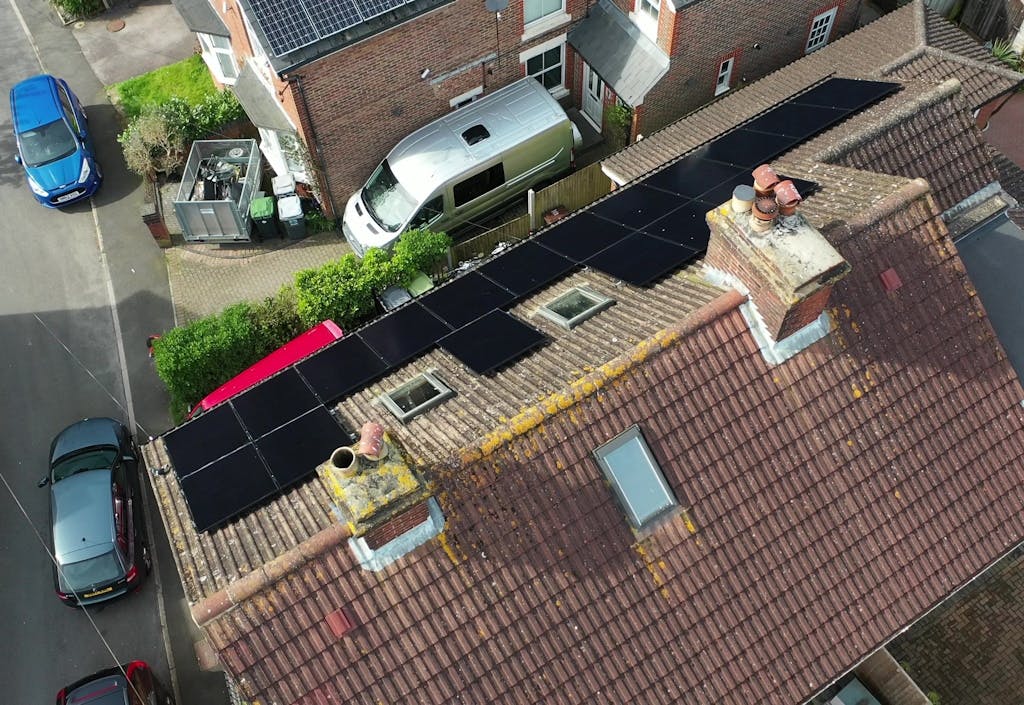
The impact of angle on solar panel output
The results in the chart below are the averages of 26 systems in Yorkshire, each with a peak output rating of 4kWp (kilowatt-peak).
39 degrees is clearly the best angle, followed by 38 and 37 degrees.
However, as you can see, any of the angles used in this study would succeed in producing more than 3,400kWh (kilowatt-hours) per year – which is the average amount of electricity used in a UK household.
And despite this study only taking place in Yorkshire (as opposed to happening across the whole country), you'll see in the next section that the recommended angle for solar panels around the UK is pretty much the same everywhere.
Best angle for solar panels by location, UK
The best angle for solar panels is slightly different depending on where you are in the country, as your position relative to the sun changes.
To find the ideal angle in several different UK locations, we've used irradiance datasets from the Microgeneration Certification Scheme (MCS).
| Location | Best angle for solar panels |
|---|---|
| London | 37-40° |
| Brighton | 38-40° |
| Bristol | 37-39° |
| Cardiff | 37-39° |
| Manchester | 37-40° |
| Newcastle | 39-44° |
| Edinburgh | 40-44° |
As you can see, the ideal range of angles for your solar panels is almost exactly the same all over the UK.
The further north you go, the more beneficial it is for your roof to be slightly steeper, but only by a few degrees.
Verified expertWhen assessing the suitability of your property for solar, a good installer should always take roof angle into account. When we’re looking at a home, we use software that accurately tells us the roof angle, and then we factor this into our forecasts for electricity output and energy bill savings.
Tom Brehme
Technical Manager at Sunsave
Tom has worked in residential solar installation for more than a decade, and is a fully qualified electrician.
Does the optimum angle change throughout the year?
The optimum angle for solar panels changes throughout the year because of the sun's shifting position relative to your home.
During summer, the sun is higher in the sky, so it's better to angle the panel slightly flatter for maximum daylight absorption.
And a steeper angle is needed in winter, when the sun is lower in the sky.
Many solar companies will tell you to take your latitude and reduce it by 15 degrees to find your panels' optimum summer angle, then add 15 degrees to your latitude in winter – but this is an oversimplification.
In the depths of winter and height of summer, your ideal angle will be 20 degrees away from your latitude, but this changes continuously throughout every season.
In a perfect world, you'd be able to constantly adjust your panels' angles, but that's not practical or affordable for most rooftop solar panel systems, especially considering the upfront cost of panels.
Some ground-mounted systems use ‘trackers’ that change each panel’s angle and direction as the year progresses, but they’re costly and don't work on rooftops.
If your roof's angle is somewhere in the region of 40 degrees, a solar panel system will usually generate a large amount of electricity per year.

The UK's first solar subscription
- No upfront cost
- Fixed monthly fee
- 20-year Sunsave Guarantee
What’s the best direction for solar panels to face?
The best orientation for a solar panel depends on where you are in the world.
Solar panels in the UK will always work best when pointed south, as it means they’re facing the sun.
This is usually known as a zero-degree 'azimuth', which is the ideal position. If your panels face west, this would be a 90-degree azimuth, whereas 270 (or -90) degrees would refer to an east-facing system.
Unlike the slight regional variation in optimum angles, the best direction remains constant across the country, according to the MCS.
If your roof has a south-facing section, your installer should prioritise using it, but if not, solar panels are now advanced enough to make exclusively east-west arrays also work well.
East-facing panels produce more electricity in the morning, while west-facing arrays generate more in the afternoon and evening.
If you only have space on your rooftop for north-facing solar panels, it’s normally not worth going ahead with the installation. Rooftops that face north-east or north-west can be suitable though, as part of a larger installation.
Solar orientation works this way in the UK because we're in the northern hemisphere, where the sun passes through the southern part of the sky.
In the southern hemisphere, the sun is in the northern part of the sky, so it's best to point your panels northwards.
Verified expertNorth-facing rooftops are traditionally considered unsuitable for solar panels in the UK, but this isn’t necessarily the case anymore – solar panel technology has come a long way in the past couple of decades. If you’re already installing solar on a south-facing, east-facing or west-facing roof and you have an additional roof that faces north, it may be worth adding an array on there too.
Alfie Ireland
Head of Operations & Technical at Sunsave
Alfie has worked in green tech for over a decade. During his four years at OVO, he helped develop the world’s largest domestic vehicle-to-grid trial.
The impact of direction on solar panel output
Your solar panel system's direction is one of the biggest factors in determining its output.
This chart below uses an average of 26 arrays in Yorkshire that all have peak power ratings of 4kWp, and confirms that south-facing is the best direction.
The next-best option is an east-facing array, followed by west-facing, though in percentage terms it doesn't make too much difference.
If the numbers below seem a little confusing, these are all referring to 'degrees from south' - so perfectly south-facing would be zero degrees, east-facing would be -90, and west-facing would be 90.
What if you don’t have an angled roof for solar panels?
If you don't have an angled roof for solar panels, there are other options available, with varying levels of feasibility and effectiveness.
Here are some examples of alternative strategies.
Ground-mounted solar panels
A ground-mounted solar installation can be an excellent alternative, but you'll need the resources necessary to make it happen.
Putting solar panels on your land instead of your roof gives you the ability to decide on their angle and direction, and to turn them to face the sun as it moves.
If your electricity usage is extremely high, and you have the land and disposable income to spare, you can potentially generate a huge amount of electricity with a ground-mounted system.
And if you add trackers that ensure your panels follow the sun, you can produce even more solar-generated electricity.
However, ground-mounted systems are usually too impractical and expensive for UK households.
It'd typically cost you 15-20% more than a rooftop system, because of the extra labour and materials required to keep your panels secured to the ground.
And you'll need planning permission if the proposed system will exceed nine square metres, be more than three metres wide or deep at any point, more than four metres high, or less than five metres away from your property's boundary.
For more information, read our guide to ground-mounted solar panels.
Solar panels on a flat roof
Flat roofs can support solar panels, but only in limited circumstances.
Homeowners with flat roofs used to need planning permission to install solar panels, but in December 2023 the government changed its 'permitted development' rules to remove this necessity in most cases.
However, most flat roofs can't hold a solar panel system. A good installer will avoid drilling into a flat roof for fear of causing leaks, and will instead use ballasts – each of which weighs 80kg per panel.
This'll make your system around five times heavier.
The great majority of UK roofs can comfortably support a solar array in which each panel weighs around 20kg, but when you raise that to 100kg per panel, you start having problems.
Most domestic flat roofs aren't strong enough to support this kind of load, so it's only an alternative for a small number of households.
For more information, read our guide to solar panels on flat roofs.
Solar panels on a balcony
You can put vertical solar panels on balconies or their railings to generate electricity, but they won't be as effective as rooftop installations because they can't face the sun directly all day.
Even though they're not as efficient, vertical balcony solar panels are still a great way to generate renewable electricity in crowded cities where there's little room for normal solar panels – or where you don't own the roof.
For example, Germany experienced a seven-fold increase in plug-in solar arrays in the first quarter of 2023, compared to the previous year. People living in flats can even buy subsidised plug-in systems at their local supermarket.
Next steps
The key to maximising your solar electricity production lies in strategic panel placement. The best spot for solar panels in the UK is a roof that faces south and has an angle of about 40 degrees.
But remember, these are just general guidelines. Other factors – like shading from your immediate environment and your specific location – could affect where your installer can place your solar panels.
Ultimately, your best bet is to consult with a professional installer to find the right solution for your home.
To find out how much a solar & battery system could save you on your electricity bills, answer a few quick questions below and we’ll generate an estimate.
Best angle and direction for solar panels: FAQs
Related articles
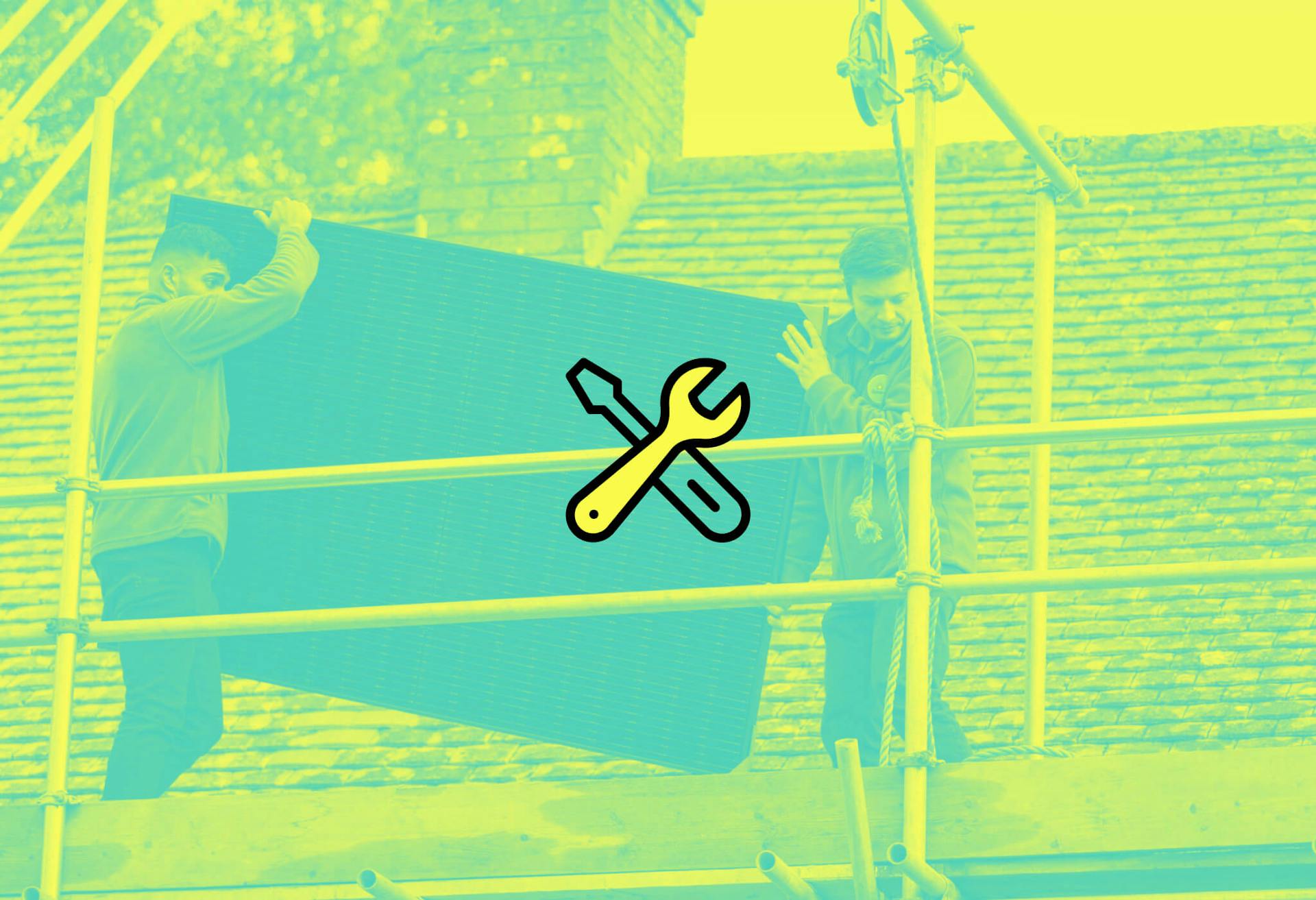
How are solar panels installed?
Read full story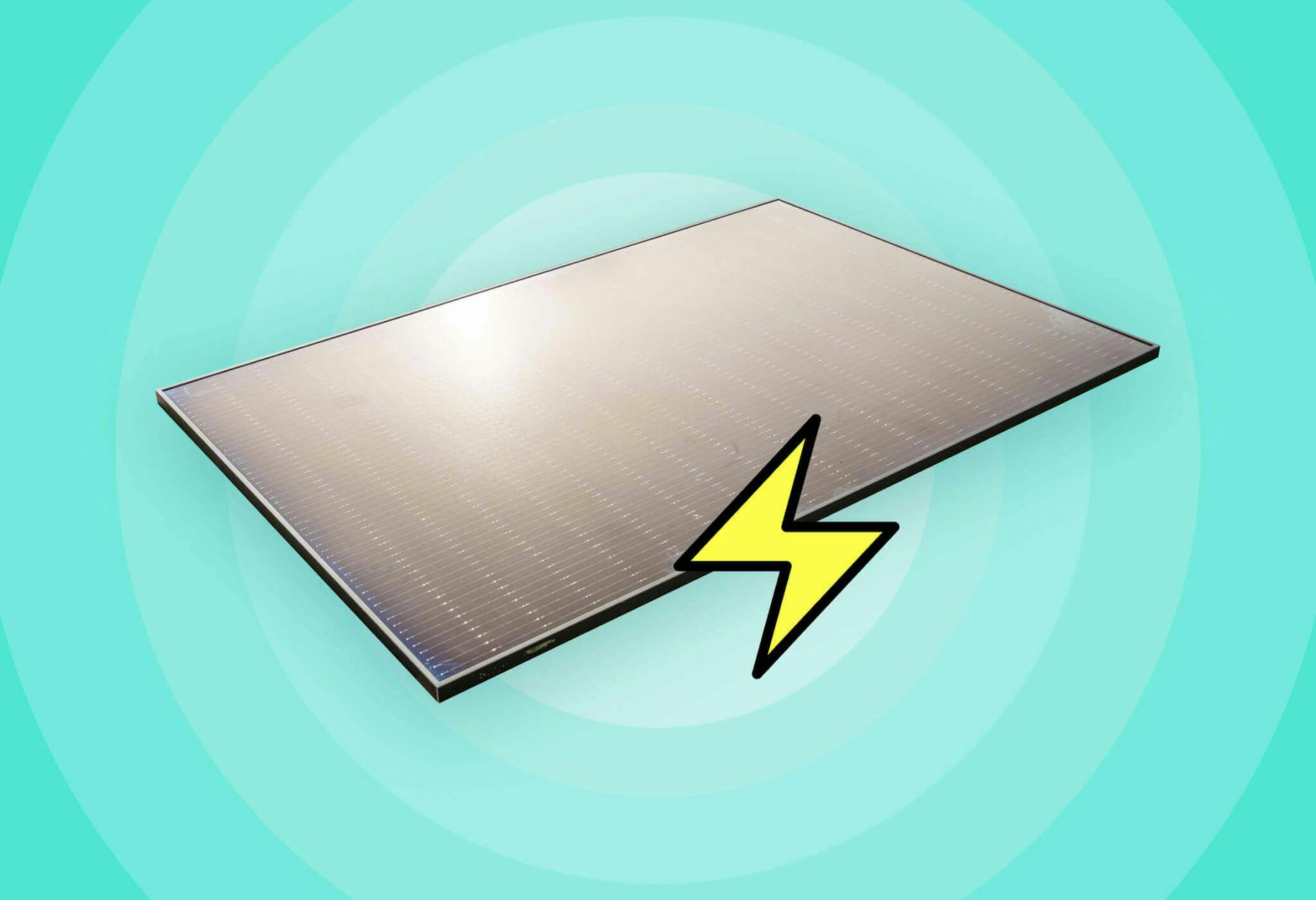
How much energy do solar panels produce?
Read full story
North-facing vs south-facing panels
Read full story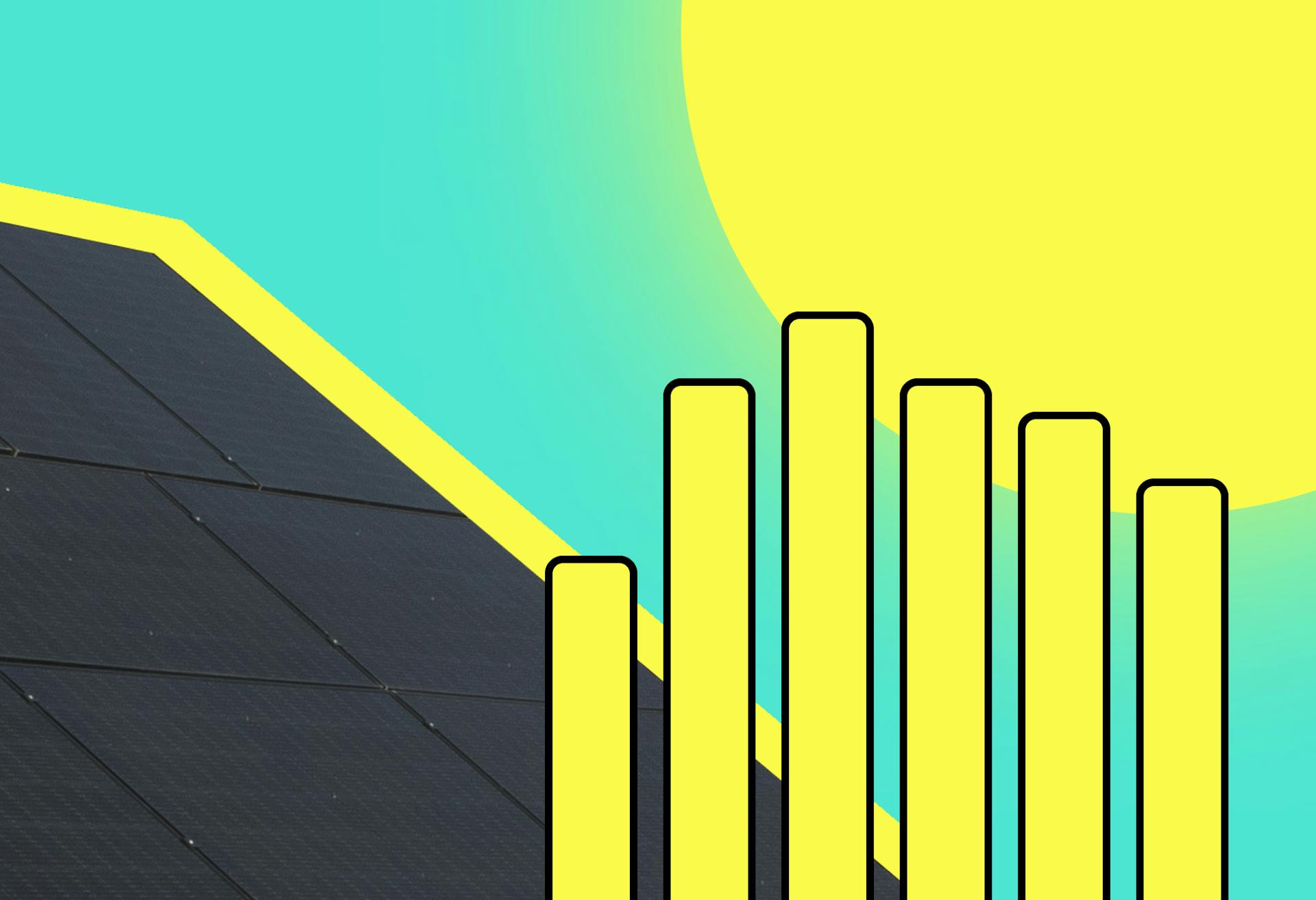
How efficient are solar panels?
Read full story
Written byJosh Jackman
Josh has written about the rapid rise of home solar for the past six years. His data-driven work has been featured in United Nations and World Health Organisation documents, as well as publications including The Eco Experts, Financial Times, The Independent, The Telegraph, The Times, and The Sun. Josh has also been interviewed as a renewables expert on BBC One’s Rip-Off Britain, ITV1’s Tonight show, and BBC Radio 4 and 5.

